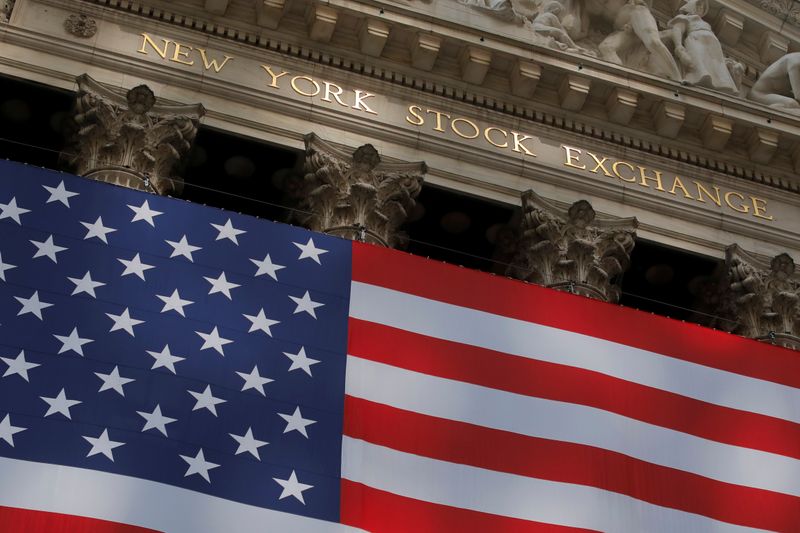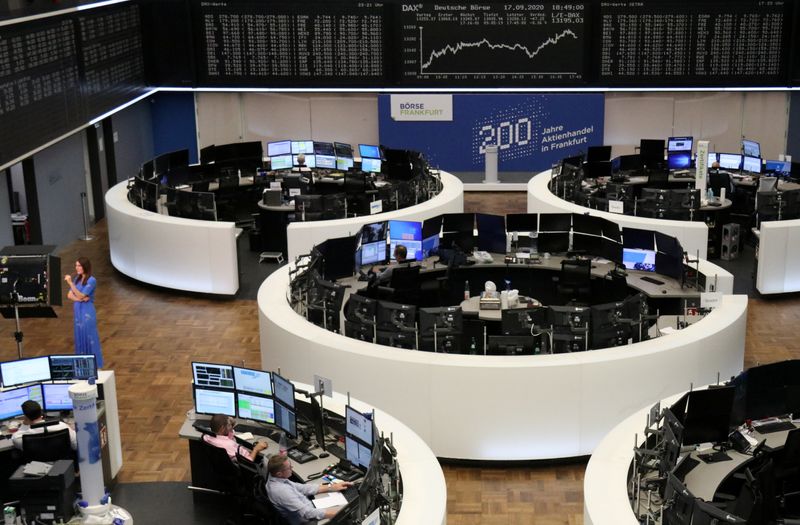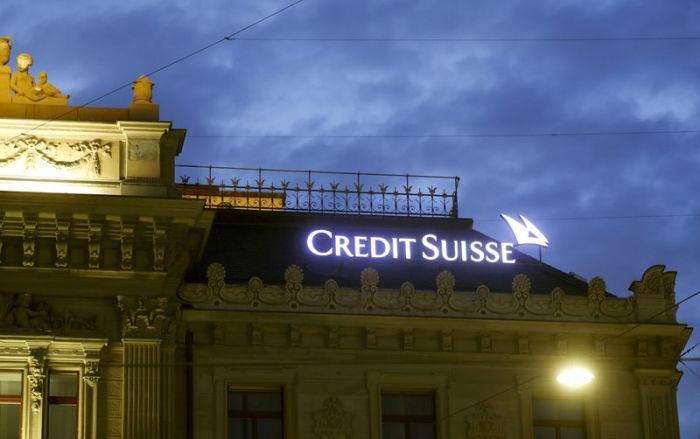NEW YORK (Reuters) – Shares fell on Wednesday and the dollar hit its strongest level in two months as data cast a pall on the economic outlook, reaffirming concerns that new restrictions to counter coronavirus infections will hurt the recovery.
The speed of recovery in U.S. business activity slowed in September, with gains at factories more than offset by a retreat at services industries, suggesting a loss of momentum in the world’s largest economy as the COVID-19 pandemic lingers.
The U.S. economy is leveling off at about 80% of activity before the lockdowns and won’t get back to normal until a vaccine is in place, said Jason Pride, chief investment officer of private wealth at Glenmede in Philadelphia. “We’re at that phase where it’s harder to get that next bit of the recovery, that next bit of the reopening in place,” he said.
September surveys of private sector activity also painted a gloomy picture in Europe, with rising COVID-19 infections leading to a downturn in services industries.
The Dow Jones Industrial Average <.DJI> fell 525.05 points, or 1.92%, to 26,763.13, the S&P 500 <.SPX> lost 78.65 points, or 2.37%, to 3,236.92, and the Nasdaq Composite <.IXIC> dropped 330.65 points, or 3.02%, to 10,632.99.
The pan-European STOXX 600 index <.STOXX> rose 0.55%, and MSCI’s gauge of stocks across the globe shed 1.47%.
Emerging market stocks lost 0.48%. MSCI’s broadest index of Asia-Pacific shares outside Japan closed 0.04% higher, while Japan’s Nikkei <.N225> lost 0.06%.
Adding to the negative market sentiment, President Donald Trump said he thinks the 2020 presidential election will end up at the U.S. Supreme Court, saying that is why it is important to have nine justices.
The death last week of Ruth Bader Ginsburg, a liberal justice, leaves the court at eight members currently, making a tie vote on rulings possible. The process to replace Ginsburg will likely clog the Senate – making it even harder to discuss stimulus legislation that some economists say is needed to sustain the economic rebound.
In foreign exchange markets the dollar was the standout mover, touching its highest level since late July against a basket of six major currencies <=USD>.
“The market continues to reevaluate its previously very optimistic stance on the status of global risks out there,” said Ben Randol, senior FX strategist at BofA Securities in New York.
“The news flow has been negative on the virus and negative on growth. We’ve had some crummy data and also we’ve had the Fed speakers that have been on balance considerably less dovish than the market seemed to expect, which puts positions at risk,” Randol said.
The dollar index <=USD> rose 0.45%, with the euro <EUR=> down 0.44% to $1.1655.
The Japanese yen weakened 0.44% versus the greenback at 105.38 per dollar, while sterling <GBP=> was last trading at $1.2713, down 0.14% on the day.
Oil settled a tick higher, but prices continued to fall post-settling, weighed partly by the stronger dollar and a starker view of the global economic recovery.
U.S. crude <CLc1> recently fell 0.75% to $39.50 per barrel and Brent <LCOc1> was at $41.40, down 0.77% on the day. Brent had gained over 2% at its session high.
Benchmark 10-year notes <US10YT=RR> last fell 4/32 in price to yield 0.6773%, from 0.664% late on Tuesday.
In its largest daily decline in five weeks, spot gold <XAU=> dropped 2.1% to $1,859.20 an ounce. Silver <XAG=> fell 6.77% to $22.76.
Silver is down nearly 15% just this week.
(Reporting by Rodrigo Campos; additional reporting by Herbert Lash, Chuck Mikolajczak, Sinéad Carew and Stephanie Kelly in New York; Editing by Nick Zieminski and Leslie Adler)



















